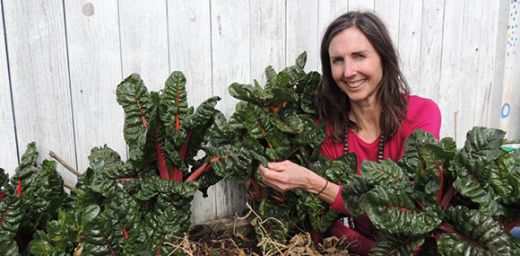
Supermarket shelves stripped bare as panicked people jostle for the last packet of toilet paper, their trollies laden with excessive amounts of food and supplies. Nearby, a family of four are surviving on a diet of donated or discounted food.
These are two incongruous scenes that unfolded during the pandemic. Inequality in access to food is not new, but it has been heightened during COVID-19, according to University of Tasmania Food, Nutrition and Public Health Lecturer and Accredited Practising Dietitian Sandra Murray.
Myths abound when it comes to food insecurity, or the lack of regular and reliable access to enough safe and healthy food. Assumptions including a person’s weight indicating access to food; a lack of understanding about the number of people struggling to put food on the table and the tendency to blame parents for the situation, are among the conclusions recently unpacked in the alumni webinar series, Explore, in which Ms Murray also examined the impact of the pandemic on our ability to eat and source food.
“COVID-19 has really highlighted that there are people really struggling,” she said.
“In June my colleagues and I ran a survey with the Tasmania Project to assess people’s access and supply to food during the pandemic and what we found was one in four people are struggling to put food on the table every day because they cannot afford to buy more.
“Previous research has found food insecurity in Tasmania is between 6-10 per cent.”
While the most recent survey involved Tasmanians, Ms Murray said it was likely to be similar in other parts of the world.
With 25 years’ experience as a dietitian, Ms Murray is currently completing a PhD exploring food justice in Tasmania.
“Food justice means taking a holistic view of the food system that sees access to healthy food as a human right and addresses structural barriers to that right,” she said.
“During the pandemic so many emergency food relief programs have sprung up, which has been extremely important, but it also highlights how vulnerable the food system is.
“We need to stop and think about what our food system should look like and how this may change after the pandemic.”
Ms Murray said part of the solution was giving everyone impacted an equal voice, government and industry working together, and a focus on having short and local supply chains where the food was sourced, processed, and eaten locally.
You can watch the What does it take to put good food on the table? webinar in the Explore series at: https://youtu.be/imNk_D_8aec